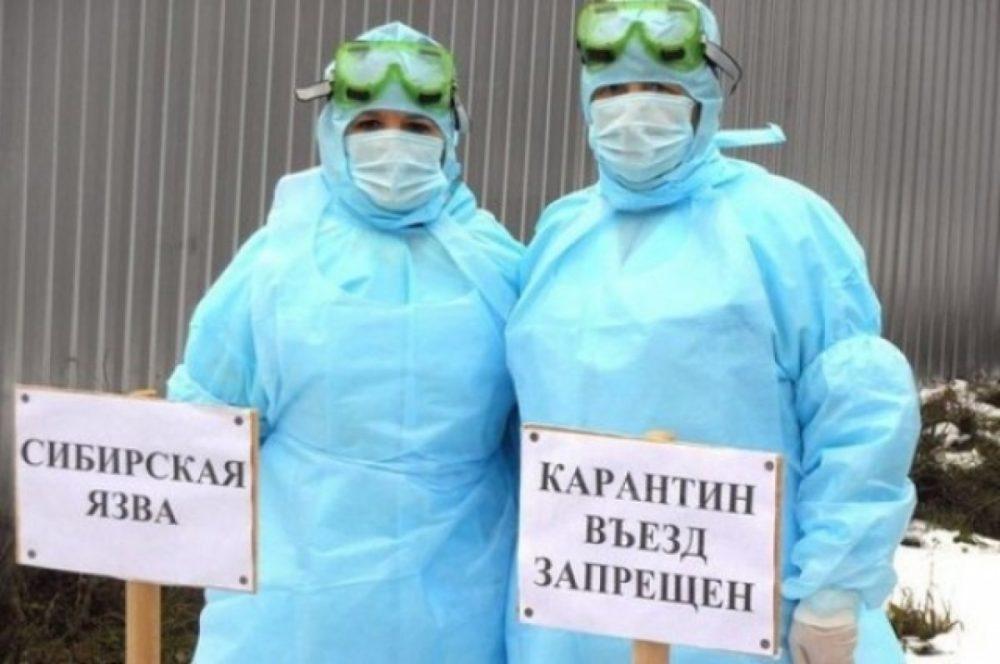Siberian Ulcer (Malignant Carbuncle): A highly dangerous infection affecting both agricultural and wild animals of all kinds, as well as humans. It is caused by the bacterium Bacillus anthracis.
The bacterium responsible for Siberian Ulcer forms spores outside the host’s body in the presence of oxygen, making it highly resistant to high temperatures, desiccation, and disinfectants. These bacterial spores can persist in the soil for years, rendering pastures contaminated with the excreta and urine of infected animals or animal burial sites dangerous reservoirs for Siberian Ulcer spores. The sources of infection primarily include large livestock such as cows, moose, deer, as well as small ruminants (sheep, goats), hooved animals (horses, pigs), to a lesser extent, wild mammals (wolves, foxes, hares, bears), and even less frequently, dogs and cats, which excrete the pathogen in their urine and feces. Animals become infected by contact with soil when grazing on contaminated feed or water, or by inhaling the pathogen spores.
How to Recognize Siberian Ulcer in Animals?
If the disease progresses rapidly, the animal may succumb suddenly without any clinical signs. In cases where the disease progresses more slowly, excitement and restlessness can be observed in sheep and goats, accompanied by teeth grinding, sudden jerky movements, and collapsing during walking. The body temperature of the animal sharply increases. Blood-tinged foam may be observed coming from the oral and nasal cavities.
In the case of large ruminants and horses, excitement typically occurs initially, accompanied by a frightened look, body temperature rising to 40-42 degrees Celsius, and irregular breathing. This initial excitement is followed by depression. The animal collapses, tilts its head back, and eventually succumbs. During the agony period, a bloody froth may be observed coming from the mouth and nose. Usually, the death of the animal occurs within 2-3 days.
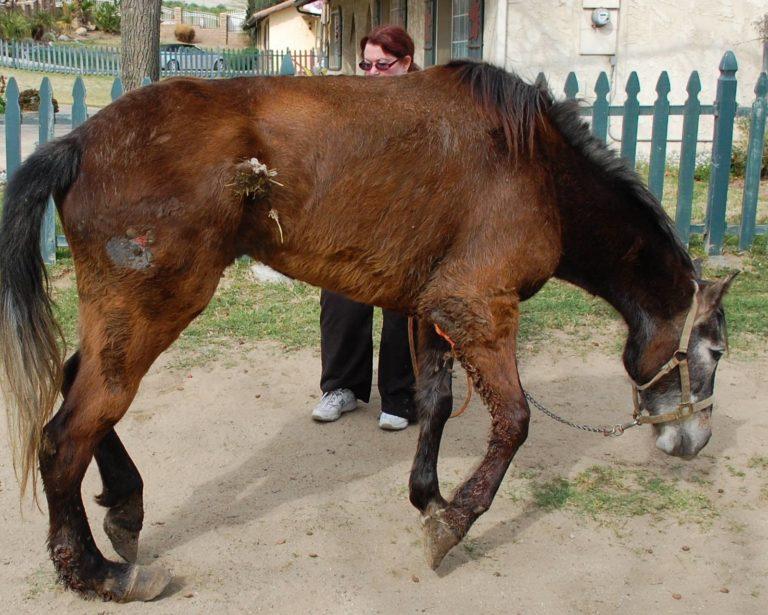
Human infection from animals typically occurs through damaged skin (98-99% of cases), with airborne transmission being a rare occurrence. In exceptional cases, infection can also happen through the gastrointestinal tract, usually when consuming the meat of diseased animals. People can contract Siberian Ulcer while caring for sick animals, during livestock slaughtering, butchering, and by handling animal products (skins, hides, fur products, wool, bristles).
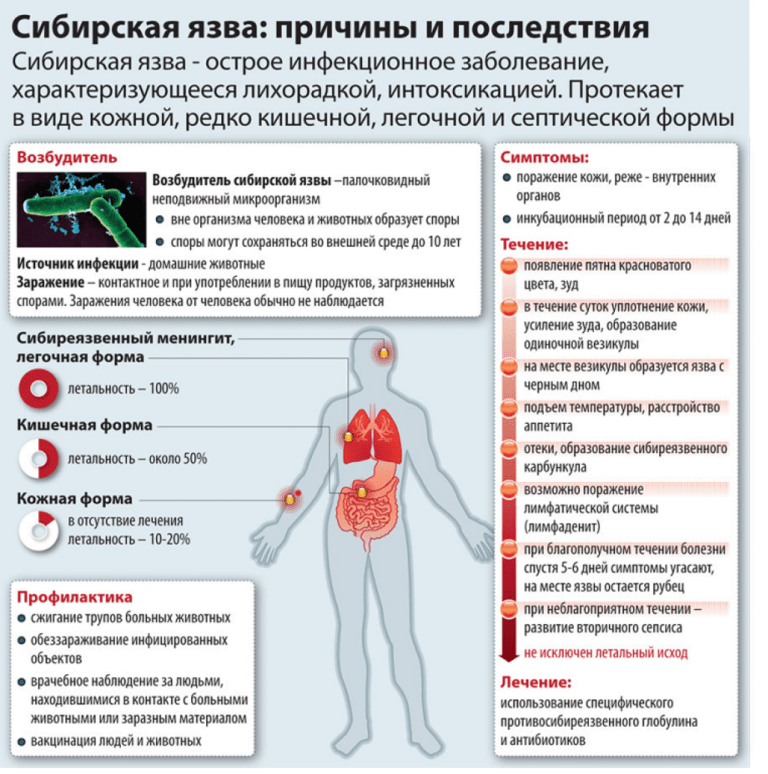
Incubation period ranges from several hours to 14 days.
Symptoms of Siberian Ulcer in Humans
Cutaneous (Carbuncular) Form:
The disease predominantly affects exposed areas of the body, with the condition being particularly severe when carbuncles appear on the head, neck, or the mucous membranes of the mouth and nose. Typically, there is a single carbuncle, but sometimes there can be as many as 10-20 or more.
Initially, a reddish-blue spot with a diameter of 1-3 mm appears, resembling an insect bite. After a few hours, it develops into a papule with itching and a burning sensation. Within 12-24 hours, the papule becomes a blister, 2-3 mm in diameter, filled with fluid that darkens and becomes bloody. Scratching the blister causes it to burst, leaving behind an ulcer with a dark brown base and raised edges. Within a day, the ulcer reaches a diameter of 8-15 mm. In 1-2 weeks, the central part of the ulcer turns into a black, painless, dense scab, surrounded by a pronounced inflammatory red border. The scab’s appearance resembles a piece of burning charcoal, which is the origin of the disease’s name, “Anthrax.” The skin lesion is referred to as a carbuncle.
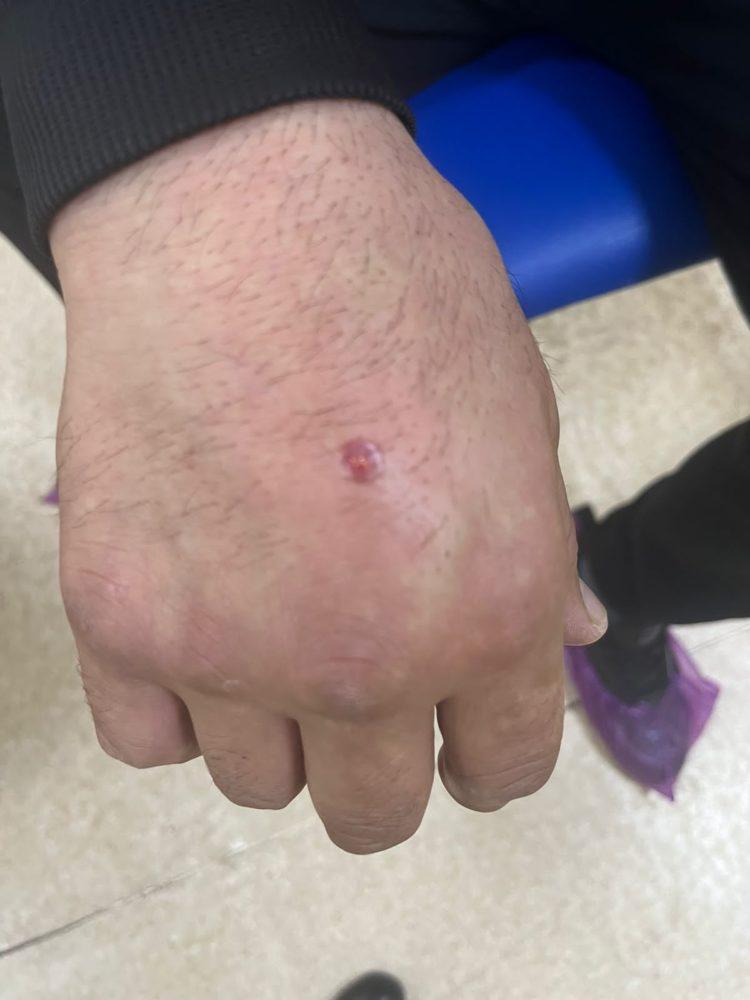

Pulmonary Form – caused by inhaling spores and is often fatal. It is characterized by a rapid onset of symptoms. Chest pain, shortness of breath, and foamy, bloody sputum are typical signs.
Gastrointestinal Form – develops when contaminated meat is consumed. Symptoms include severe abdominal pain, abdominal distension, bloody vomiting and diarrhea, dehydration, fever, and chills.
Diagnosis is confirmed through the isolation of the pure culture of the pathogen.
Treatment must be administered in an infectious disease hospital.
Upon detection of Siberian Ulcer, in accordance with Article 27 of Kazakhstan’s Veterinary Law, quarantine measures are implemented for a period of 15 days.
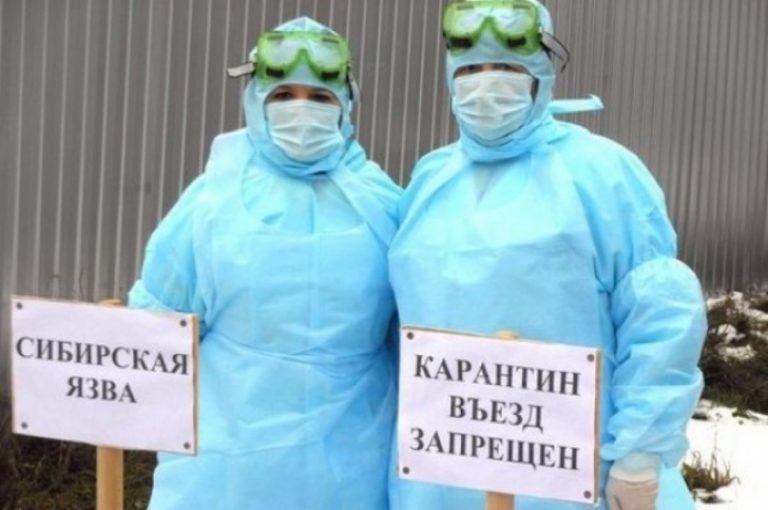
Preventive Measures:
- Vaccination of both humans and animals with the dry Siberian Ulcer vaccine
- Early detection of infected animals, followed by their isolation and the incineration of carcasses.
- Thorough decontamination of wool and fur products using chamber disinfection.
- Active medical monitoring of individuals in contact with infected animals for a period of two weeks.
- Do not purchase meat from private sellers at informal markets.
- Only buy meat with veterinary stamps and when the seller provides veterinary accompanying documents.
- Protect your hands by wearing gloves when handling raw meat.
- Ensure that meat is thoroughly cooked before consumption to kill any potential pathogens.


